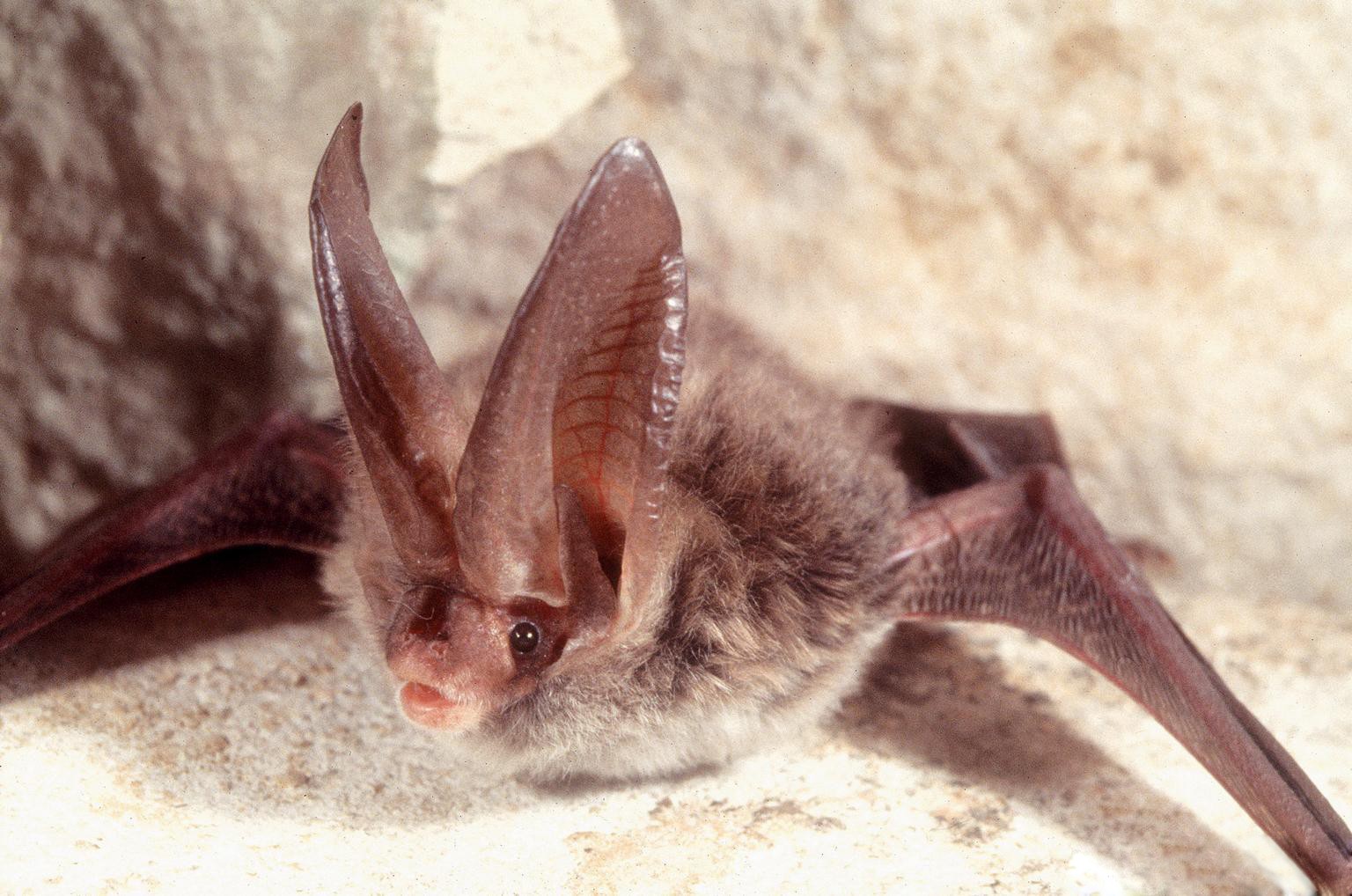Rafinesque's big-eared bat
A species of Long-eared bats Scientific name : Corynorhinus rafinesquii Genus : Long-eared bats
Rafinesque's big-eared bat, A species of Long-eared bats
Botanical name: Corynorhinus rafinesquii
Genus: Long-eared bats
Content
Description General Info
 Photo By U.S. Department of Agriculture , used under CC-BY-2.5 /Cropped and compressed from original
Photo By U.S. Department of Agriculture , used under CC-BY-2.5 /Cropped and compressed from original Description
As its name implies, this species has ears over an inch long. The genus name Corynorhinus means "club-nosed". Similar to Townsend's big-eared bat, this species has two lumps on either side of its nose. Rafinesque's big-eared bat is a medium-sized bat with a length around 7.5–10 cm (3.0–3.9 in) and a wingspan of 25–30 cm (10–12 in). These bats range in weight from 6–13 g (0.21–0.46 oz). The bat is gray on the dorsal side and white on the underside. The ears and face are a pinkish-brown color, while the forearm and wing membrane are dark brown. Some sources report its maximum lifespan as 10 years, although robust data are lacking. More research has been done on the closely related Townsend's big-eared bat, and estimates for this species' lifespan range from 16 to 30 years in the wild. While uncommon throughout its range, this species is found in a variety of habitats from coastal plains and riparian areas to mountainous areas such as the Great Smoky Mountains National Park. In all cases, these bats are associated with large areas of relatively mature forest. 
Size
8 - 10 cm
Colors
Brown
Gray
White
Life Expectancy
10-30 years
Nest Placement
Cavity
Feeding Habits
Rafinesque's big-eared bat are insectivorous, feasting mainly on moths which constitute 90% of their diet. They are nocturnal and employ echolocation to locate their prey, catching insects in flight or gleaning them from surfaces.
Habitat
While uncommon throughout its range, this species is found in a variety of habitats from coastal plains and riparian areas to mountainous areas such as the Great Smoky Mountains National Park. In all cases, these bats are associated with large areas of relatively mature forest. Due to seasonality, geographical location, and frequent roost-switching, C. rafinesquii can be found in a variety of locations. Tree roosts may be in living or dead trees but are usually quite large (one study reported average diameter at breast height of tree roosts to be 79 cm with a height of 18.5m). Rafinesque's big-eared bats can also be found in abandoned buildings, under bridges, in wells, and in caves.
Dite type
Insectivorous
General Info
Feeding Habits
Bird food type
Behavior
Rafinesque's big-eared bat is a nocturnal species with a solitary lifestyle, predominantly exhibiting roosting and hibernation behaviors. It frequents caves or abandoned mines for hibernation and maternity roosts. Although mostly solitary, it demonstrates social behavior during mating and nurturing young. Rafinesque's big-eared bat relies heavily on echolocation for feeding on insects, navigation, and communication.
Species Status
While listed as least concern by the International Union for the Conservation of Nature (previously listed as vulnerable), Rafinesque's big-eared bats are listed as a candidate II species of concern by the U.S. Fish and Wildlife Service. Additionally, it is listed as threatened by state agencies throughout most of its range. White-nose syndrome is a serious disease caused by a fungal pathogen that has devastated several species of bats in the eastern United States. Unlike some other species of bats with which it shares its range, Rafinesque's big-eared bat does not appear to be affected by the disease. Hypothesized reasons include use of hibernacula that may not provide optimal growing conditions for the causal agent (the fungus Pseudogymnoascus destructans), relatively frequent arousals from torpor, and/or the usage of shallow bouts of torpor by this species. 

 Photo By U.S. Department of Agriculture , used under CC-BY-2.5 /Cropped and compressed from original
Photo By U.S. Department of Agriculture , used under CC-BY-2.5 /Cropped and compressed from original Scientific Classification
Phylum
Chordates Class
Mammals Order
Bats Family
Evening birds Genus
Long-eared bats Species
Rafinesque's big-eared bat